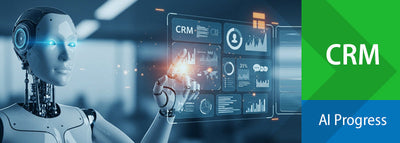Essential Applicant Tracking System (ATS) Software Requirements and Features: Buyer's Guide
What Are Applicant Tracking Systems (ATS)?
Recruiting the right talent can be a daunting task for organizations. With many applications flooding in for open positions, how can businesses ensure they’re not overlooking the best candidates? The answer lies in Applicant Tracking Systems (ATS) software—designed to streamline the hiring process by automating tasks, organizing resumes, and improving efficiency while helping recruiters find the best candidates.
Modern ATS platforms go beyond basic resume storage. They incorporate features like AI-powered resume parsing, candidate ranking, and tracking capabilities to ensure an Ideal hiring workflow. According to recent industry data, over 98% of Fortune 500 companies and many smaller organizations rely on ATS platforms to manage their recruitment efforts, underscoring their importance in today’s HR landscape.
But, with so many options available in the market, how do you choose the right ATS for your business? This buyer’s guide will walk you through the essential ATS requirements and features you should look for when evaluating software, ensuring you make an informed decision that fits your company’s hiring needs.

Why Applicant Tracking Systems Are Essential in 2025
The way companies hire is changing rapidly. New technologies, shifting workplace expectations, and the rise of remote work have reshaped how businesses attract and manage talent. In 2025, Applicant Tracking Systems (ATS) are no longer optional—they’re crucial for helping businesses stay competitive in this fast-evolving landscape.
Key Trends Making ATS a Must-Have in 2025
The challenges of modern hiring call for tools that are adaptable, efficient, and scalable. Here’s how ATS platforms are addressing the top hiring trends in 2025:
1. Remote and Hybrid Hiring Are the New Normal
With remote and hybrid workforces becoming standard, businesses are hiring from a global talent pool. While this opens up opportunities to find the best candidates, it also creates new challenges:
-
How do you manage interviews across different time zones?
-
How do you collaborate effectively when hiring remotely?
-
How do you manage the documentation digitally to streamline cross-border recruitment?
ATS platforms simplify these processes by offering tools like video interview scheduling, digital onboarding, and centralized data management. According to research, 78% of companies say ATS has made their hiring process easier than ever! Whether you’re hiring locally or internationally, an ATS ensures you can handle the complexities of virtual recruitment efficiently.
2. Automation Levels the Playing Field for Small Businesses
For small businesses, hiring can feel overwhelming. Limited resources and small teams often struggle to manage high volumes of applications. ATS platforms solve this by automating repetitive tasks like:
-
Screening resumes
-
Posting job ads to multiple platforms
-
Tracking candidate progress
These tools save time and help smaller businesses compete with larger companies for top talent. MyNextHire reports that ATS can reduce time-to-hire by up to 40-50%. For small teams looking to grow quickly, ATS platforms provide enterprise-level capabilities without the need for a full HR department.
3. Industry-Specific Needs Are Driving ATS Customization
Every industry has unique hiring challenges, and modern ATS platforms offer specialized features to address them, for example:
-
Tech Companies: With the growing demand for skills in AI, cybersecurity, and software development, ATS platforms help tech recruiters filter candidates by skillsets, certifications, and experience. An article reports that 87% of tech recruiters rely on ATS to identify niche talent.
-
Healthcare: ATS platforms simplify complex processes like credential verification, compliance checks, and scheduling for highly specialized roles. For example, iCIMS offers healthcare-focused tools that reduce the time needed to verify qualifications.
-
Retail and Hospitality: High turnover rates and seasonal hiring make efficiency a priority. ATS solutions like BambooHR enable batch processing of applications and streamlined onboarding, helping retail businesses reduce time-to-fill for seasonal roles by over 30%.
Comprehensive Features of Applicant Tracking Systems (ATS)
Modern Applicant Tracking Systems (ATS) have grown far beyond basic resume storage, evolving into feature-rich platforms that transform the hiring process. When evaluating an ATS, it’s essential to focus on key features that simplify recruitment, embrace innovation, and enhance the candidate experience—all while integrating flawlessly with your existing tools and workflows.
Core Features Every ATS Should Include
The foundation of any effective ATS lies in its ability to optimize and simplify hiring. These essential features ensure a smooth recruitment process:
-
Job Distribution and Posting
-
Publish job listings across multiple platforms, including job boards (e.g., Indeed, LinkedIn), career websites, and social media channels.
-
Centralize job postings to reduce manual effort and maintain consistent branding.
-
Resume Parsing and Organization
-
Automatically extract candidate data from resumes and structure it for easy review.
-
Support multiple formats (PDF, Word, and LinkedIn profiles) and ensure accuracy with robust parsing algorithms.
-
Interview Scheduling and Candidate Communication
-
Enable automated interview scheduling with calendar integration (e.g., Outlook, Google Calendar).
-
Centralize communication with candidates through email templates, SMS notifications, and real-time updates.
-
Reporting and Analytics
-
Track key hiring metrics, such as time-to-fill, source effectiveness, and diversity hiring statistics.
-
Generate custom reports to identify bottlenecks and improve decision-making.
Example: Greenhouse, excels in these areas with customizable workflows and centralized tools that support businesses of all sizes.
Candidate-Focused Features
Candidate experience is vital for attracting top talent. ATS platforms are now prioritizing tools that enhance engagement and transparency throughout the hiring process:
-
Mobile-Friendly Applications
-
Optimize application processes for mobile devices to capture on-the-go candidates.
-
Features like one-click LinkedIn applications or autofill forms improve conversion rates.
-
Real-Time Status Updates
-
Keep candidates informed about the status of their applications with automated notifications.
-
Build transparency and trust through personalized dashboards.
-
Personalized Communication and Automated Emails
-
Send tailored emails acknowledging applications, interview scheduling, and rejection feedback.
-
Use automated workflows to ensure consistent yet personal engagement throughout the hiring process.
Example: Jobvite leads in enhancing candidate engagement, offering tools that have helped organizations achieve a significant increase in applicant satisfaction.
Integration and Customization
Flawless integration with other business systems is critical for maximizing ATS efficiency:
-
CRM and Employee Onboarding Integration
-
Connect ATS platforms with Customer Relationship Management (CRM) systems to align recruitment with client or project needs.
-
Streamline onboarding with automated workflows that transfer candidate data directly to Human Resource Information Systems (HRIS).
-
Payroll and Benefits Management
-
Enable smooth transitions from candidate selection to payroll setup by integrating with platforms like ADP or Workday.
-
Customizable Workflows and Dashboards
-
Tailor workflows to match specific hiring processes for different roles or departments.
-
Offer configurable dashboards to present role-specific analytics and insights.
Example: Zoho Recruit stands out for its customizable workflows and integrations with tools like Slack, QuickBooks, and Microsoft Teams, making it a versatile solution for growing businesses.
An ATS with the right mix of essential features, advanced tools, and candidate-focused options can completely transform how organizations approach hiring. By choosing a platform that fits their unique needs, businesses can stay ahead of the curve, streamline their recruitment process, and attract top talent well into 2025 and beyond.
Evaluating the Right ATS for Your Business
Not all Applicant Tracking Systems (ATS) are created equal. The key to finding the right fit lies in going beyond basic features to evaluate how well a platform aligns with your organization’s unique challenges and goals.
With the right approach, you can confidently select an ATS that transforms your recruitment process, helping you attract, engage, and secure top talent efficiently.
Follow these steps to ensure you select a platform that meets your unique needs:
Conduct a Needs Assessment
Before diving into the sea of ATS options, take time to identify the specific challenges your business faces in recruitment. Key questions to ask include:
-
Are you struggling with high-volume hiring?
-
Is improving the candidate experience a top priority?
-
Do you need advanced tools for compliance or reporting?
-
Are you hiring across multiple geographies or industries?
A thorough needs assessment ensures your chosen ATS aligns with your goals, whether it's automating repetitive tasks, improving communication, or tracking compliance. You can use the free ATS requirements template below.
Compare ATS Systems
Rather than focusing on finding the "best" ATS on the market, aim to find the one that’s the best fit for your business.
-
Use Comparison Tools and Resources: Leverage templates and reports that help you evaluate platforms side-by-side based on features, integrations, and pricing. For instance, Software Battlecard's ATS Report offers a detailed comparison of leading ATS platforms.
-
Analyze Key Features: Look for specific capabilities that you need for your company like AI-driven candidate matching, custom workflows, DEI tools, and real-time analytics.
Ask Vendors the Right Questions
Engage ATS vendors with questions tailored to your workflows and requirements. Examples include:
-
How does the ATS integrate with our existing tools (e.g., HRIS, payroll, and job boards)?
-
Does it offer customizable workflows and branded career pages?
-
What are the pricing models, and are there any hidden fees?
-
How secure is the system, and what data protection measures are in place?
-
Does the platform include AI features like resume parsing or candidate scoring?
The answers will help you assess whether the ATS can streamline your recruitment process while addressing potential gaps.
Use Expert Resources
Making an informed decision is easier when you utilize trusted tools and expert insights. Consider these resources:
-
Comparison Templates: Create a list of critical requirements and compare options side-by-side.
-
ATS Key Features and Buyer’s Guide: Learn more about leading systems through detailed analysis and buyer recommendations.
-
Video Insights: Watch expert reviews on YouTube for deep dives into the best ATS platforms for 2025.
These resources provide actionable steps to align ATS capabilities with your business needs, saving you time and effort during the evaluation process.
Final Considerations
Selecting the right ATS is a critical step toward streamlining your recruitment process, improving candidate engagement, and empowering your team to make smarter hiring decisions.
When making your final choice, focus on platforms that:
- Address your unique hiring challenges.
- Integrate perfectly with your existing systems.
- Offer scalability to grow alongside your business.
Choosing the right ATS isn’t just about ticking boxes—it’s about empowering your team to hire better, faster, and smarter. Take your time, ask the right questions, and invest in a solution that drives real impact.
Important Resources:
- Free Detailed Comparison of Top ATS Systems. (Download Free Report)
- Free ATS Requirements Template. (Download Free Template)
- Best ATS System: iCIMS vs. Jobvite vs. Oracle Taleo (Download Free Report)
- Finding the Best ATS System for Your Organization - Read More




